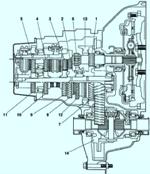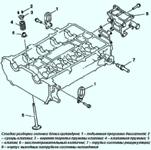Checking the engine oil level
Make sure the vehicle is on level ground
Warm up the engine to normal operating temperature
Stop the engine and wait at least 5 minutes for the oil to drain into the sump.
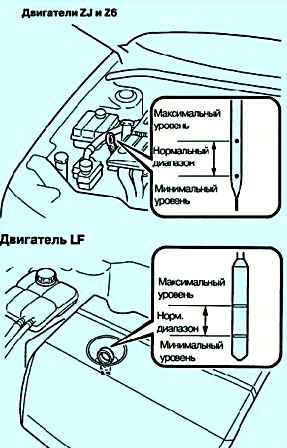
Remove the control oil dipstick, wipe it dry and reinsert the dipstick until it stops (Fig. 1.).

Remove the dipstick and check the oil level on it.
The normal oil level in the engine corresponds to the range between the maximum and minimum level marks.
If the oil level is near or below the lower minimum mark, top up to the maximum mark.
Make sure the O-ring on the dipstick is in place before inserting the dipstick into the engine.
A change in the oil level between the marks on the dipstick corresponds to topping up or using the next volume of oil.
For ZJ and Z6 engines ─ 1 litre. For the LF engine ─ 0.75.
Checking the coolant level
Check the freezing point of the coolant in the engine cooling system at least once a year - before the start of the winter season, and also before driving to places where the ambient temperature can be negative.
Check the condition and tightness of all hose connections of the engine cooling system and the heater.
Replace any deformed or damaged hoses.
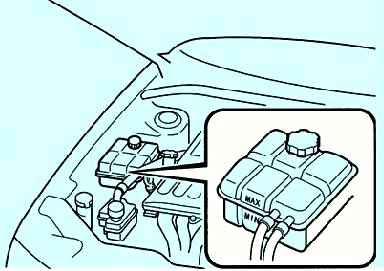
On a cold engine, the coolant level should correspond to the base of the radiator filler neck and be between the upper ("FULL") and lower ("LOW") marks on the wall of the expansion tank (Fig. 2.).
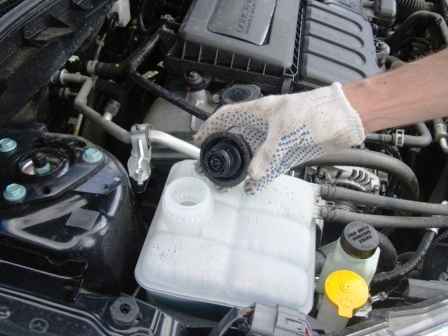
If the coolant level has fallen to the lower mark ("LOW"), add coolant to the expansion tank up to the upper mark ("FULL").
To prevent freezing of the coolant and ensure anti-corrosion protection of the engine, use only the recommended brand and concentration of coolant for topping up.
NOTE If "FL22" is marked on or near the cap of the radiator or expansion tank, only FL22 coolant should be added.
Checking the level of the working fluid in the power steering reservoir
To avoid damage to the power steering pump, do not continue to operate the vehicle if the power steering fluid level has dropped to the lower “MIN” mark.
Only use the recommended power steering fluid in the power steering hydraulic system.
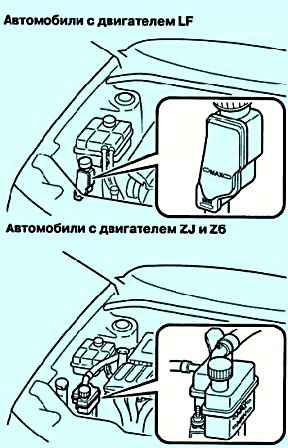
Check the power steering fluid level every time you change the engine oil.
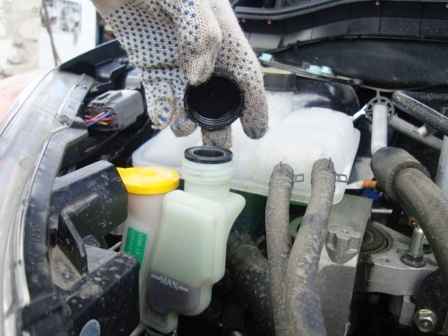
The test is performed with the engine not running, cold.
If necessary, add hydraulic fluid to the power steering reservoir.
Periodic replacement of the working fluid is not required (Fig. 3).
Checking the automatic transmission oil level
Regularly check the automatic transmission fluid level.
Verify as follows. The volume of the working fluid changes depending on the temperature.
Check the working fluid level when the engine is idling and the fluid temperature is normal.
Insufficient working fluid level causes slipping of the friction elements of the automatic transmission.
Too high liquid level can cause intense foaming, loss of working fluidity and disruption of the normal functioning of the automatic transmission.
Use only the recommended working fluid.
The use of any non-recommended working fluid can lead to malfunction and failure of the automatic transmission.
- 1. Park the vehicle on level ground and apply the parking brake.
- 2. Start the engine and press the brake pedal.
- 3. Move the range selector lever to all positions one by one and then set it to the “P” (parking) position.
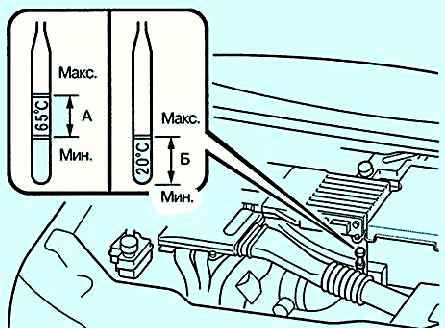
- 4. With the engine idling, remove the automatic transmission dipstick and wipe it dry.
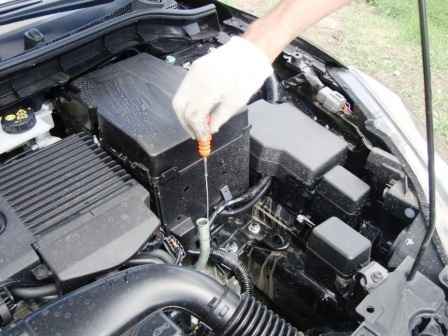
Then put the probe back in place.
Remove the probe again.
The normal level of the working fluid corresponds to the range between the marks on the dipstick, see Figure 4.
Checking the washer fluid level
Only fill the windshield washer reservoir with a specific washer fluid. or clean water.
It is dangerous to pour low-freezing coolant into the washer, as if it gets on the windshield, visibility will deteriorate, which can lead to a traffic accident.
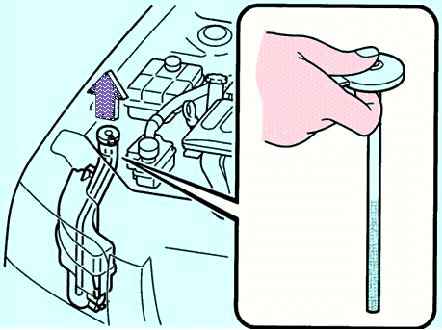
Check the fluid level in the washer fluid reservoir and top up if necessary (fig. 5).
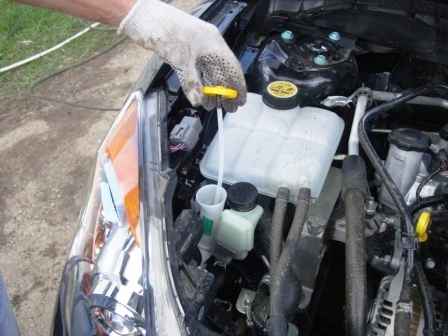
To check the fluid level in the front washer reservoir, remove the cap from the reservoir neck.
Next, place your finger over the hole in the center of the lid and lift it up.
The fluid level in the windshield washer reservoir corresponds to the height of the fluid column in the transparent tube attached to the cap.
Add windshield washer fluid if necessary.
Instead of washer fluid at a positive ambient temperature, you can fill the tank with ordinary clean water.
When the ambient temperature is below zero, use only low-freezing windshield washer fluid.
The windshield and liftgate glass washers use the same fluid reservoir.







